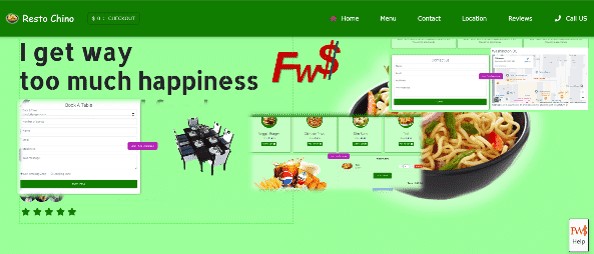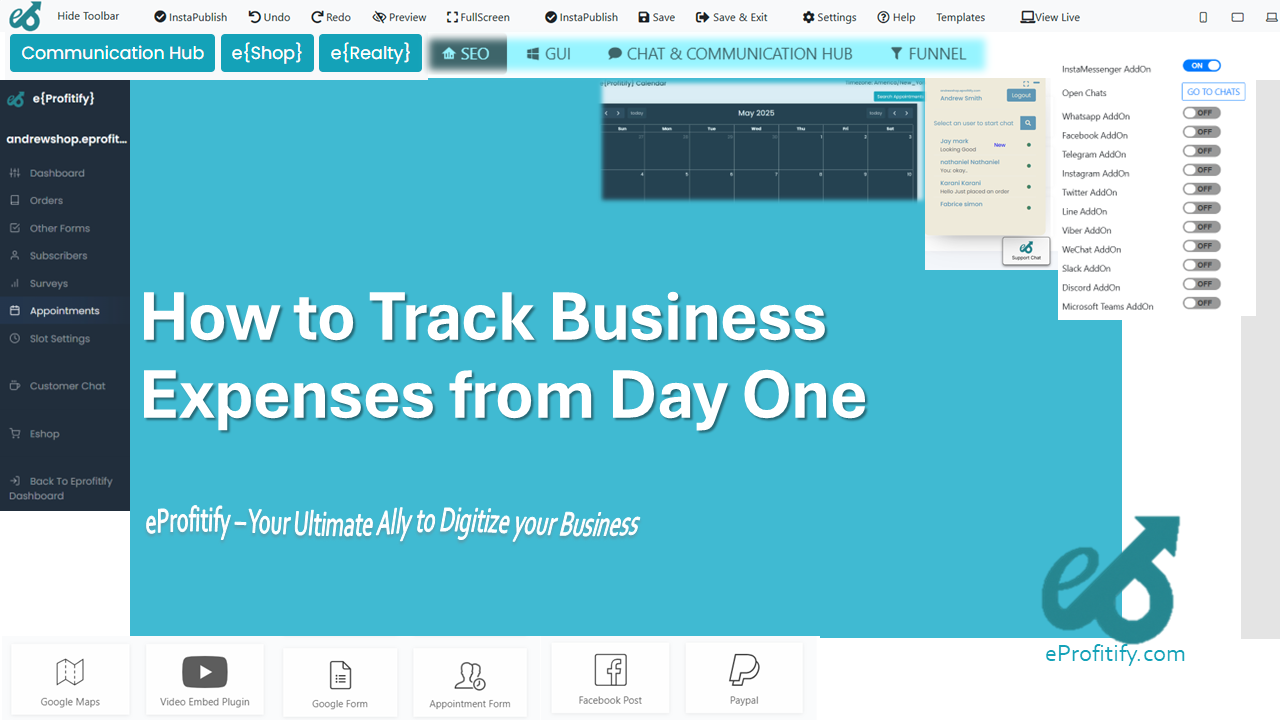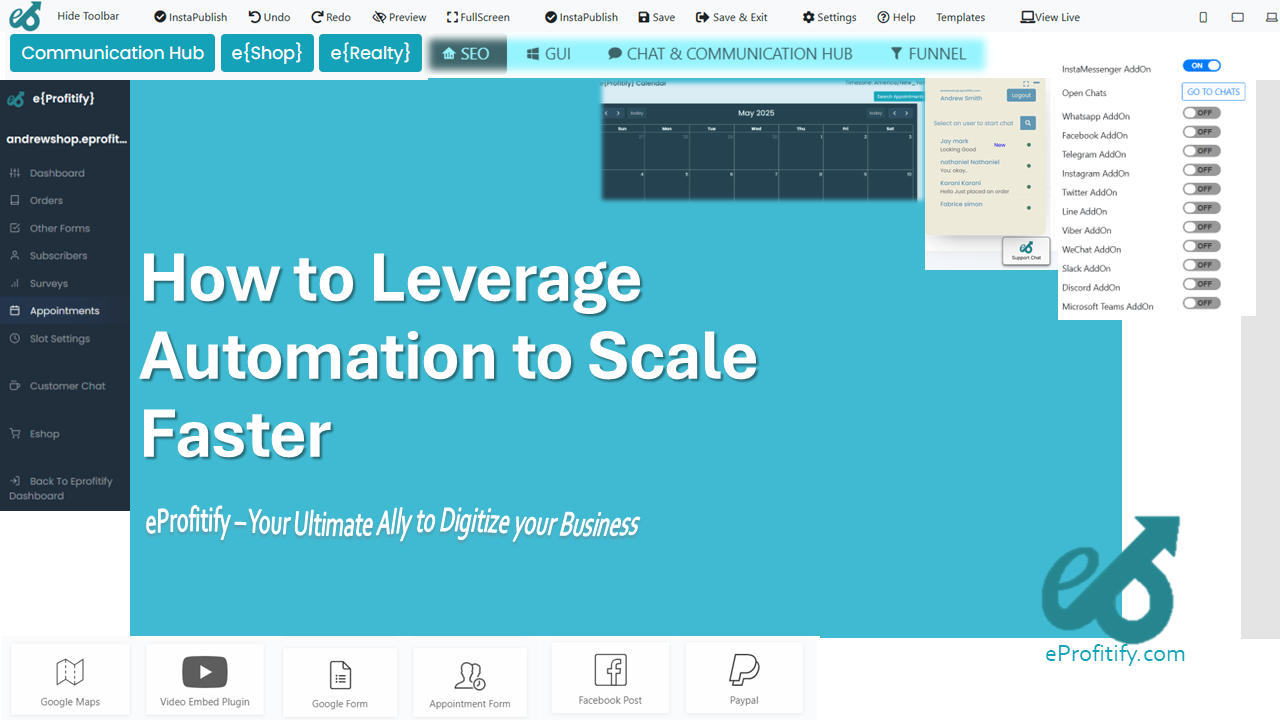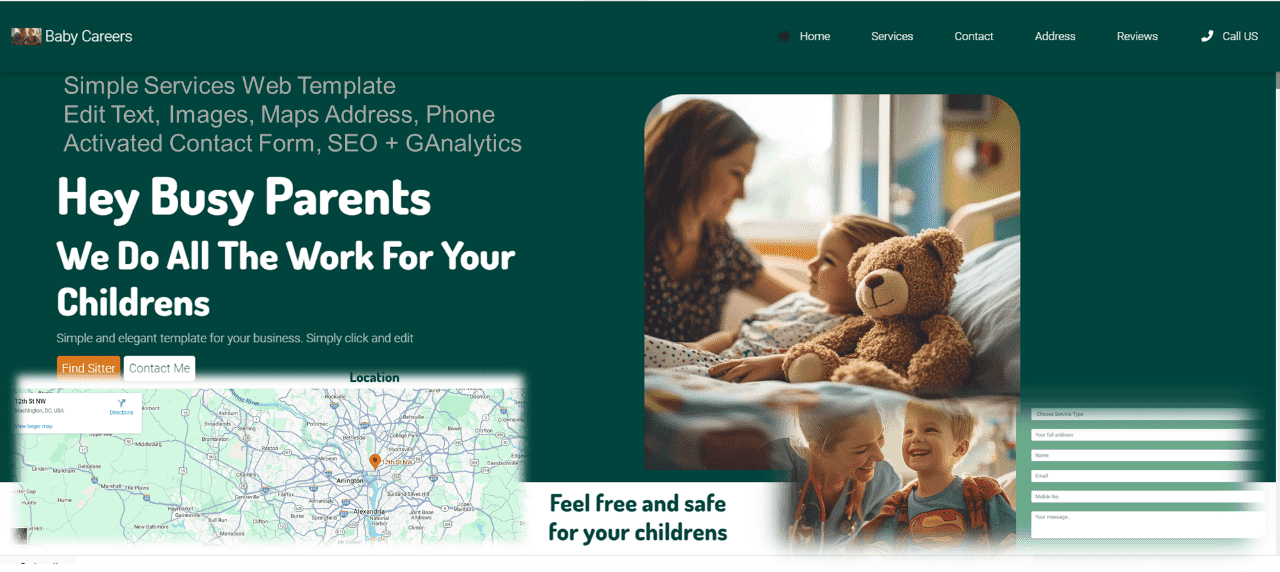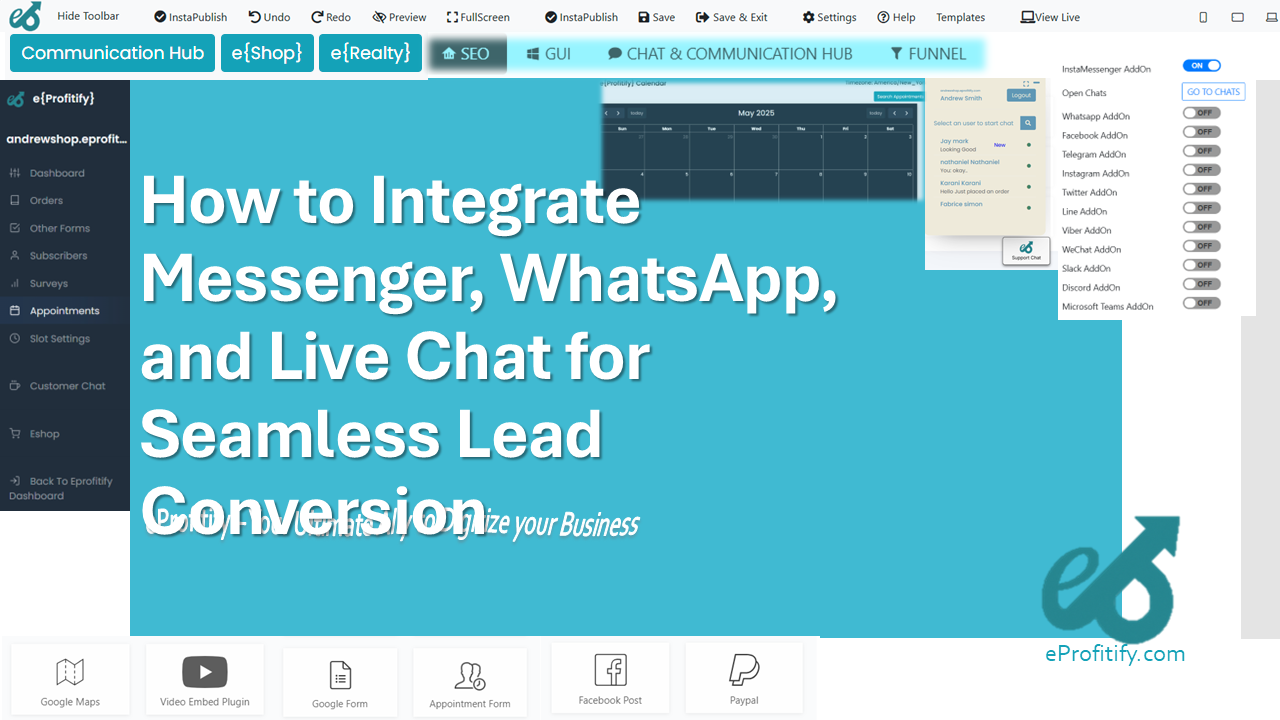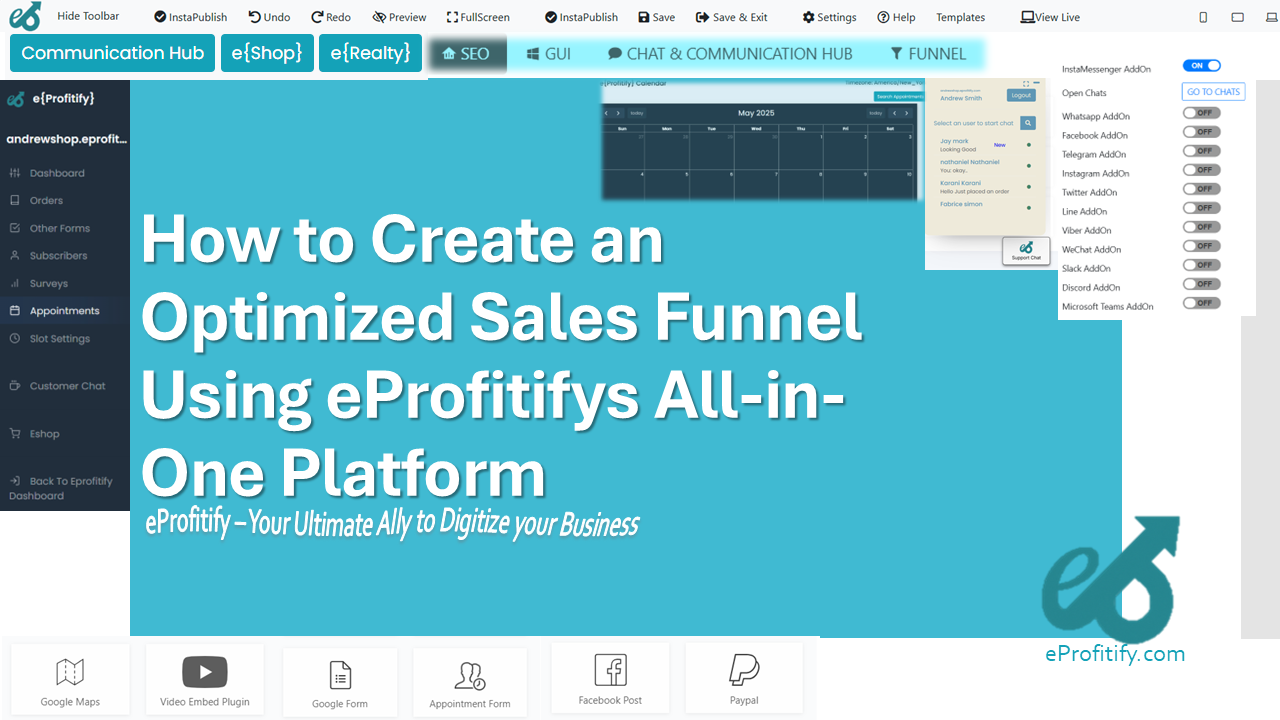Leveraging Social Media for Local Restaurant Marketing
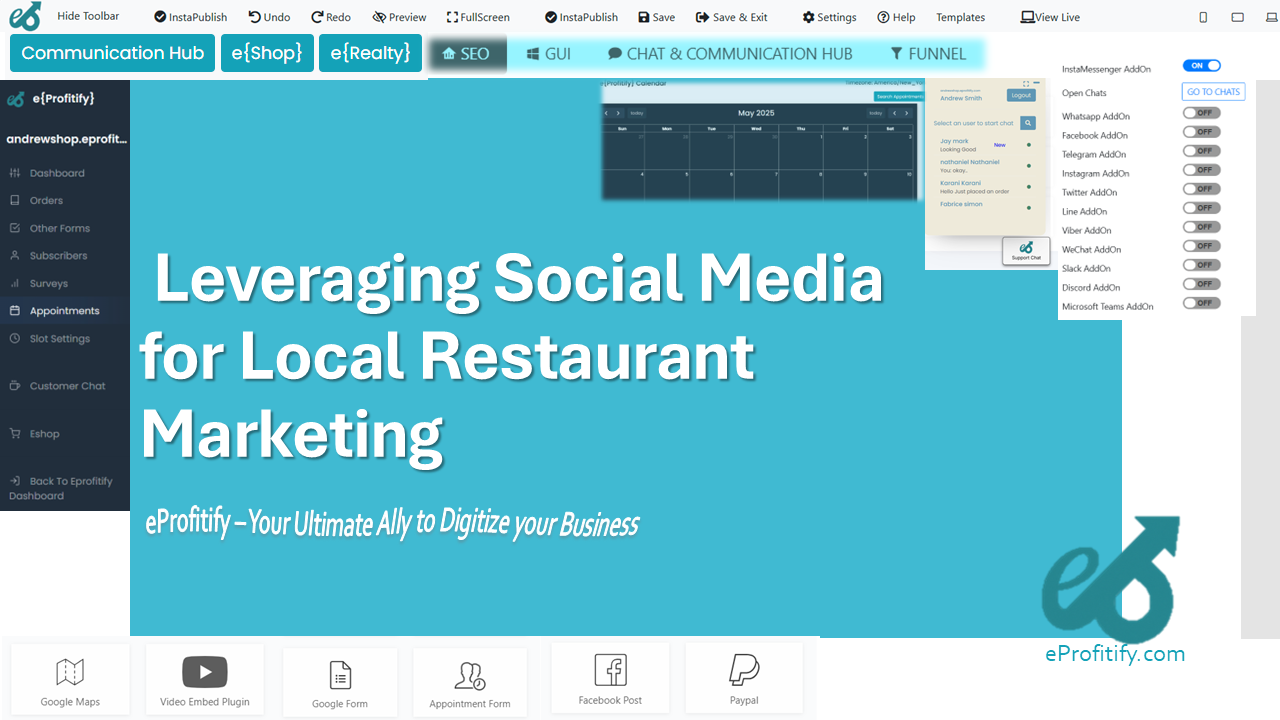
Leveraging Social Media for Local Restaurant Marketing: Strategies, Statistics, and Tools Like eProfitify
The restaurant industry is fiercely competitive, with local establishments battling for visibility, customer loyalty, and revenue. Today, social media has emerged as a critical tool for small restaurants to level the playing field. With 54% of consumers using social platforms to research restaurants before dining (BrightLocal, 2023), mastering social media marketing is no longer optional—it’s essential. This article explores actionable strategies to harness social media for restaurant marketing, backed by statistics, and introduces eProfitify, a leading website and management platform designed to streamline operations and amplify growth.
1. The Power of Social Media in Restaurant Marketing
Social media platforms allow restaurants to engage with audiences, showcase their brand personality, and drive foot traffic. Consider these statistics:
- 78% of consumers say social media posts influence their dining choices (HubSpot, 2023).
- Instagram drives 34% of food-related purchases, with visually appealing posts significantly boosting engagement (Hootsuite, 2023).
- 63% of diners check a restaurant’s social media profile before visiting (Google, 2023).
To capitalize on these trends, local restaurants must adopt a targeted approach. Platforms like Instagram, Facebook, and TikTok are ideal for sharing food photography, behind-the-scenes content, and promotions, while tools like eProfitify simplify managing these efforts.
2. Choosing the Right Platforms
Not all social platforms are created equal. Focus on channels where your audience spends time:
- Instagram: Perfect for showcasing dishes, stories, and reels. Restaurants with vibrant visuals see 2x higher engagement (Sprout Social, 2023). Tagging local hashtags (e.g., #NYCEats) increases discoverability.
- Facebook: Ideal for hosting events, sharing menus, and managing reviews. Over 1.8 billion users engage with local business pages monthly (Meta, 2023).
- TikTok: Viral food trends (like #FoodTok) can turn a local dish into a sensation. TikTok users spend 53% more on dining out than non-users (MGH, 2023).
eProfitify integrates with these platforms, enabling restaurants to schedule posts, monitor engagement, and manage customer interactions from a single dashboard.
3. Creating Engaging Content
Content strategy is key. Mix promotional posts with authentic storytelling:
- High-Quality Visuals: Posts with images receive 650% more engagement than text-only updates (Adobe, 2023).
- Behind-the-Scenes Stories: Share chef interviews, kitchen prep videos, or ingredient sourcing journeys.
- User-Generated Content (UGC): Repost customer photos and reviews. 85% of diners trust UGC more than branded content (Stackla, 2023).
eProfitify’s instant messaging feature allows restaurants to communicate with followers in real time, answering questions about menu items or reservations, while its appointment management system lets customers book tables directly via social media links.
4. Targeted Advertising and Promotions
Paid social ads help reach hyper-local audiences:
- Facebook Ads enable geo-targeting to users within a 5-mile radius. Restaurants using localized ads see a 35% increase in foot traffic (WordStream, 2023).
- Instagram’s “Order Food” sticker in stories directs users to delivery apps like Uber Eats.
- Limited-time offers, such as “Happy Hour” discounts, create urgency and boost sales.
eProfitify’s ecommerce tools simplify promo code distribution and track ad ROI, while its CRM (Customer Relationship Management) system segments audiences for personalized offers.
5. Leveraging Reviews and Loyalty Programs
Positive reviews are digital currency for restaurants. Encourage satisfied customers to leave feedback on platforms like Google My Business and Yelp.
- A single positive review can increase revenue by 9% (Harvard Business School, 2023).
- Loyalty programs shared via social media (e.g., “Tag us in your post for a free dessert”) improve retention.
eProfitify’s CRM centralizes customer data, making it easy to identify loyal patrons and reward them with exclusive deals.
6. Analytics and Optimization
Tracking performance is critical. Monitor metrics like engagement rates, click-throughs, and conversion rates to refine strategies.
- Restaurants that analyze social data see a 20% increase in ROI (McKinsey, 2023).
- A/B testing captions, hashtags, and posting times drives better results.
eProfitify’s analytics dashboard offers real-time insights, helping restaurants adjust campaigns on the fly.
7. The Role of Immersive Technologies
Innovations like Instagram AR filters (e.g., virtual food tastings) and live-streamed cooking classes deepen engagement. QR codes on tables linking to social profiles also encourage in-the-moment interactions.
eProfitify’s integrated QR code generator simplifies this process, while its appointment management system handles event registrations for live streams or workshops.
Why eProfitify Stands Out
While social media is powerful, managing multiple platforms can overwhelm small teams. eProfitify consolidates essential tools into one solution:
- Instant Messaging: Engage customers across Facebook, Instagram, and TikTok without switching apps.
- Appointment Management: Sync reservations from social media with your calendar.
- Ecommerce Integration: Sell gift cards, merchandise, or meal kits directly through social posts.
- CRM: Track customer preferences and send tailored promotions.
- Analytics: Measure campaign success and identify trends.
Restaurants using eProfitify report a 40% reduction in administrative tasks and a 30% boost in customer retention.
Conclusion
For local restaurants, social media is a bridge to community building, customer loyalty, and sustained growth. By combining strategic content, targeted ads, and immersive tools with eProfitify’s all-in-one platform, establishments can streamline operations and maximize their digital impact. As the landscape evolves, those who adapt with agility—and leverage smart tools—will thrive in the competitive food industry.
Word Count: 1,029


